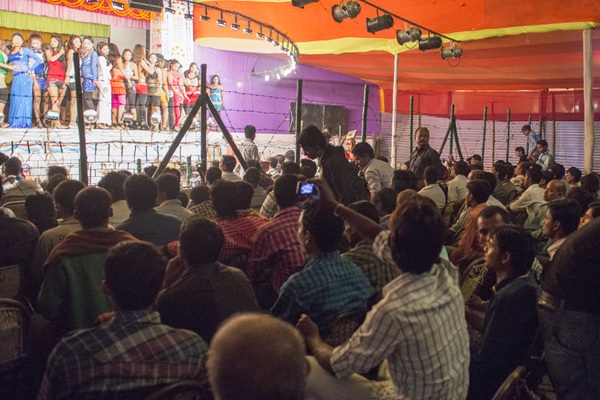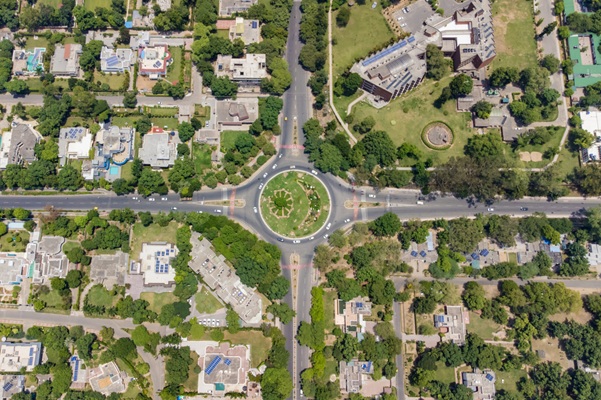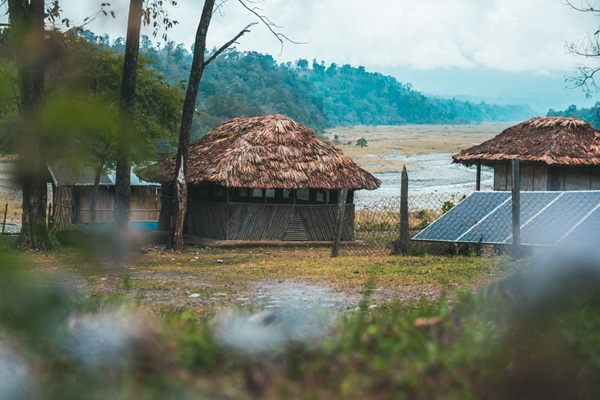.png)
Bihar Battle Enters the Last Lap of 122 Seats, Seemanchal in Focus
What impact will rebel candidates, caste equations, and minority representation have as Bihar’s final phase unfolds? Can fresh faces tip the balance in close contests?

Amitabh Tiwari, formerly a corporate and investment banker, now follows his passion for politics and elections, startups and education. He is Founding Partner at VoteVibe.
November 10, 2025 at 8:36 AM IST
The loudspeakers fall silent, the campaign dust settles, and the real voices of democracy prepare to speak as the campaign draws curtains for the second and final phase of Bihar elections. Voters across 122 constituencies in 21 districts will step out on November 11 to decide who will form the state’s next government.
The NDA enters the contest with JD(U) fielding 44 candidates and BJP contesting 53. The Lok Janshakti Party (Ram Vilas) has put up 15 candidates, the Hindustani Awam Morcha six, and the Rashtriya Lok Morcha four.
Across the aisle, the Grand Alliance, Mahagathbandhan, stakes its claim with the RJD leading on 66 seats, followed by the Congress with 32, while the CPI(ML)(L) and Vikassheel Insaan Party contest six seats each, and the CPI and CPM three and one, respectively. Prashant Kishor’s Jan Suraj Party has fielded 117 candidates.
In the 2020 elections, the Mahagathbandhan clinched 49 seats, while the NDA emerged ahead with 66 on these 122 seats. AIMIM secured five, and the BSP and an Independent won one each. The Bharatiya Janata Party had dominated the landscape with 42 of 122 seats, followed by the Rashtriya Janata Dal with 33, JD(U) with 20, the Congress with 11, and AIMIM with five seats.
As the second phase of the Bihar elections unfolds, the shadow of the past looms large. For the RJD-led Mahagathbandhan, it is a test of endurance. Can they retain the red bastions they conquered in 2020? For the NDA, anchored by the BJP and JD(U), the challenge lies in reclaiming lost ground and rebuilding voter confidence.
Also Read: Bihar Elections 2025: Decoding the High Turnout in Phase 1
New Faces, Old Equations
The NDA has also drawn four sitting MLAs from rival parties, while the Mahagathbandhan has welcomed two such crossovers—tactical moves designed to strengthen their footing in closely fought constituencies. It’s a quiet reminder that in Bihar’s politics, loyalty often bends to opportunity.
Despite elaborate seat-sharing arrangements, harmony within alliances remains fragile. In six constituencies, “friendly contests” have emerged in the MGB/INDIA bloc: Congress faces RJD in four seats, Congress locks horns with CPI in one, and Congress and VIP clash in one.
No Bihar election is complete without the drama of rebellion, and this phase is no exception. A total of 15 rebel candidates have entered the fray, seven each from the RJD and JD(U), and one from the BJP, each capable of unsettling official nominees in closely fought constituencies.
Their presence has added an unpredictable layer to the contest, especially in seats where margins were narrow in 2020. On 35 seats, margins were less than or equal to 5%, with MGB winning 17, NDA 15, and Others 3 seats. While some rebels enjoy strong local followings, others are driven by personal rivalries or denied tickets. For both alliances, these dissidents pose a quiet but significant challenge, threatening to split loyal vote bases and disrupt carefully drawn caste and coalition equations.
Of the 122 seats in contention, the NDA, the MGB, and the Jan Suraj have fielded a diverse social mix of candidates. The NDA has nominated 22 candidates from the Extremely Backward Classes (EBC), compared to 15 each by the MGB and Jan Suraj. Among General category candidates, the NDA leads with 41, followed by 19 from the MGB and 38 from Jan Suraj.
In terms of community representation, the NDA has fielded five Muslim candidates, while the MGB has 22 and Jan Suraj 21. The NDA has also put forward 25 candidates from the OBC category, against 22 from the MGB and 11 from Jan Suraj. When it comes to the politically influential Yadav community, the BJP has nine candidates, the MGB leads with 25, and Jan Suraj has 15. In 48 seats, the same social group has been winning since the last three elections; NDA has fielded the same caste/community candidate in 42 such seats.
Twenty-six seats of Magadh, 24 of Purnia/Seemanchal, 30 of Tirhut (Champaran), 12 of Bhagalpur, 11 of Bhojpur, four of Munger, and 15 of Mithilanchal are going to polls. Seemanchal saw a fierce battle where AIMIM snatched five seats in the stronghold of MGB, damaging its prospects.
Representation is a key theme in this region amongst minority communities, and whether the vote will fragment or consolidate behind MGB will be keenly watched. A section is unhappy at Muslim community candidates not being announced as Deputy CM from MGB. While MGB had led in Bhojpur and Magadh regions, NDA had swept Bhagalpur, Mithilanchal, and Tirhut.
Also Read: Key Caste Battles to Decide Who Wins Bihar in 2025
Key High-Stakes Contests
Supaul: JDU veteran Bijendra Yadav faces Congress’s Mintullah Rahmani, in a direct Yadav–Muslim test that will gauge the Mahagathbandhan’s ability to consolidate its core vote base.
Araria: An all-Muslim triangular between JDU’s Shagufta Azim, Congress’s Abidur Rahman, and Jan Suraj’s Farhat Begum. The outcome will signal whether minority votes stay consolidated or fragment.
Kishanganj: A communally sensitive constituency, BJP’s Sweety Singh (Rajput) takes on Congress’s Qamrul Hoda (Muslim). The BJP aims to breach the Mahagathbandhan’s Muslim stronghold here.
Bhagalpur: A heavyweight upper-caste clash between BJP’s Rohit Pandey and Congress veteran Ajit Sharma, father of Bollywood actress Neha Sharma. Bhagalpur could shape the narrative for the entire Ang region.
Gaya Town: BJP’s veteran and seven-time MLA Prem Kumar is up against Congress’s Akhauri Omkar Nath, in a battle reflecting BJP’s upper-caste bastion versus Congress’s revival attempt.
The campaign dust has settled, but its echoes still linger in tea stalls, marketplaces, and village chaupals. For the RJD-led Mahagathbandhan, it’s been a fight to preserve its heartlands in Seemanchal; for the NDA, a bid to reclaim its political turf in South Bihar; and for Jan Suraj, a test of whether its message can move beyond murmurs into momentum.



